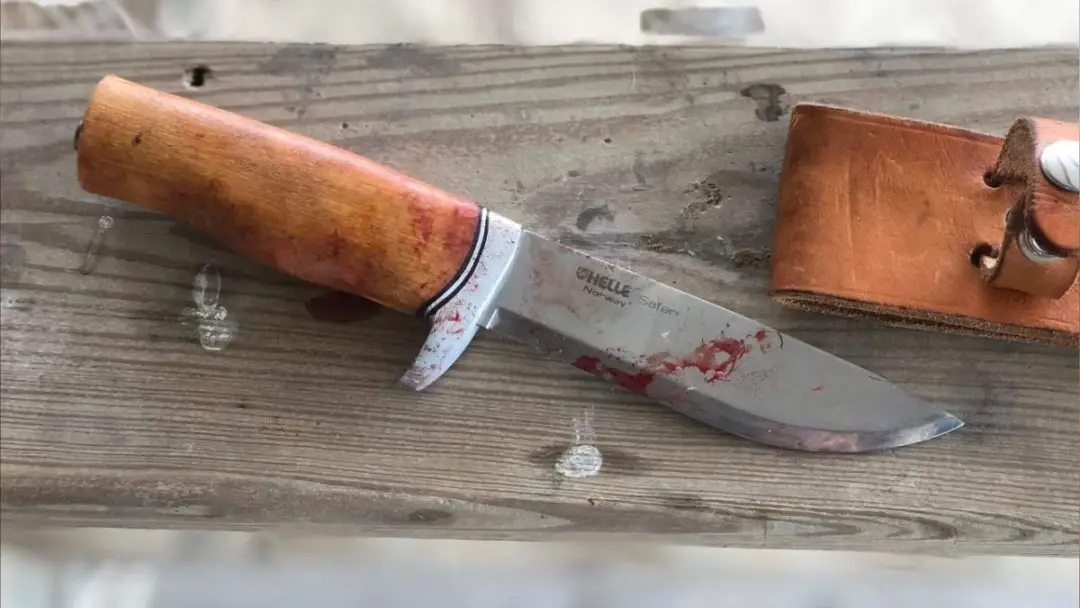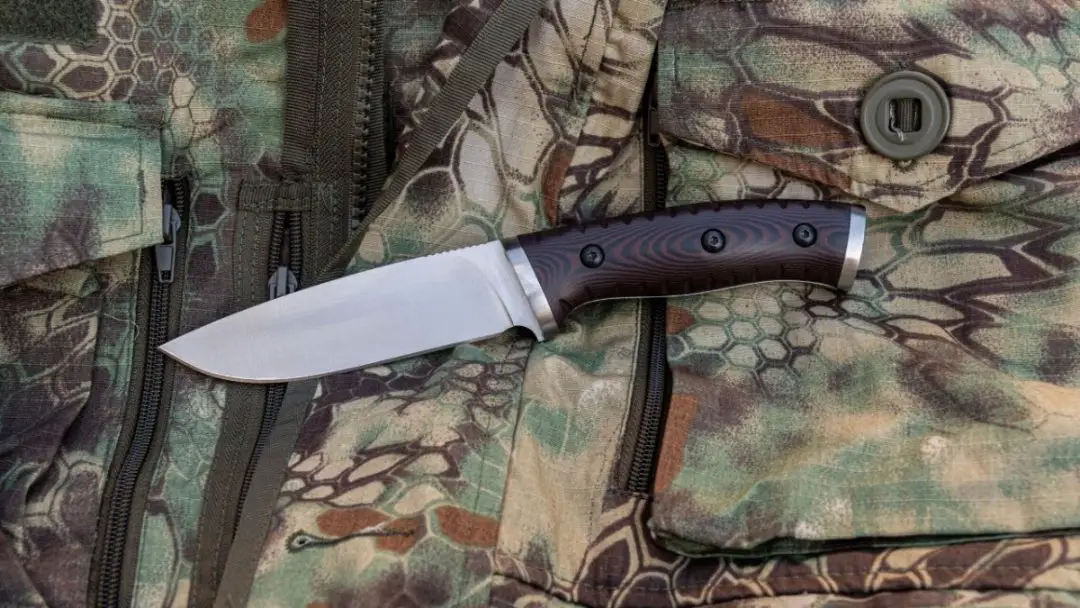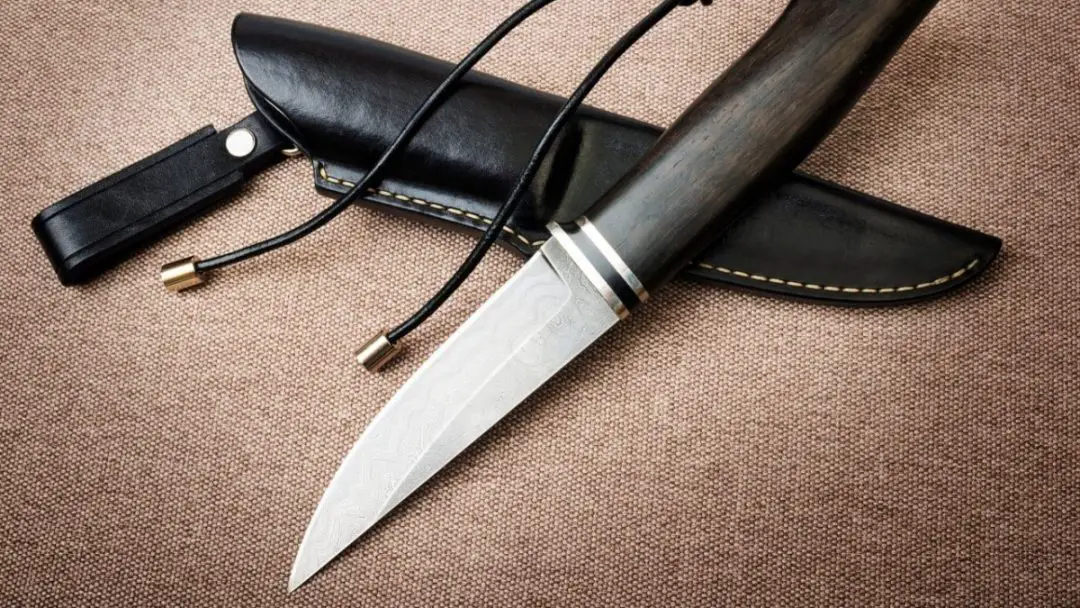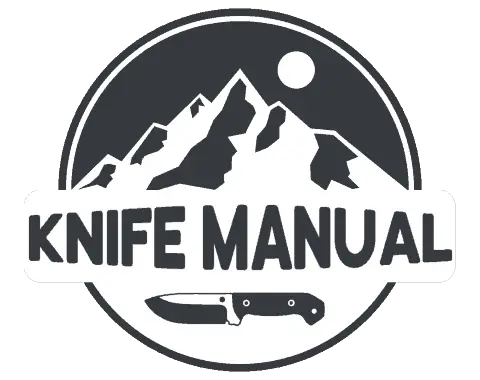
To properly and effectively skin game, you need a well-selected skinning knife to make the process as easy as possible. The last thing you want is your knife holding you back from swiftly cleaning an animal. After a lot of research, here are the essential characteristics to look for to find the perfect skinning knife.
Skinning knives serve a very specific purpose of skinning animals and game, and therefore often need certain characteristics to complete that task well. A good skinning knife should be lightweight, have a thin and sharp blade, a grippy handle, and should be very maneuverable and agile.
Skinning knives are a crucial part of skinning an animal well, and getting the wrong knife could cause a lot of trouble and headache down the road. While it might seem a little intimidating at first to try to find the perfect skinning knife, there are really only a few crucial characteristics to look for. Almost any knife can be a skinning knife, but not any knife can be a GOOD skinning knife.
Table of Contents
Characteristics of an Amazing Skinning Knife
Skinning knives are, when compared to other knives, very specific and specialized. While there are general hunting and outdoor knives, skinning knives are in their own category and have certain characteristics that assist and make skinning animals a little bit easier.
To be fair, almost any knife can be used as a skinning knife if the need arises, but we are talking about the ideal situation where you have a knife dedicated primarily to skinning and processing animals and game.
To find the perfect skinning knife for the optimal skinning and processing experience, there are certain factors and characteristics you have to look for in a knife. While every skinning knife doesn’t have to have all of these characteristics, in my opinion, the perfect skinning knife would. Obviously, it is just my opinion and your skinning knife preference might be vastly different from mine.
It really comes down to what works for you when you are processing and skinning game. These characteristics to look for in a great skinning knife are the ideal situation and would make the process go a lot quicker and easier.
Design
The design of a good skinning knife is arguably one of the primary factors that I will either hinder or allow you to easily process animals and game. While almost any knife design will work as a skinning knife as long as it is able to cut, there are certain design characteristics to look for in a knife that will be used for skinning.
It’s important to note the proportions of a good skinning knife are pretty equal between the blade and the handle. While this is not always the case, a blade that is roughly the same length as the handle allows for a nicely balanced knife that is easy to use.
Skinning knives can come in many shapes and sizes. There are folding skinning knives as well as fixed blade skinning knives, and both types of skinning knives tend to work just fine. While I personally prefer a fixed blade skinning knife, there are benefits to both and it really comes down to personal preference.
Fixed blade skinning knives can sometimes be inconvenient and bulk, but they are easy to clean and provide a nice experience when you are skinning an animal or game. Folding skinning knives are often quite convenient because they can easily fit in your pocket, but cleaning them is a real pain. As I said before, both designs work well and it really comes down to what you value in a knife and your preferences.
Weight
The weight of a skinning knife is also a very big factor to consider. The ideal skinning knife should be nice and lightweight so that it is transportable and can be used with ease for long periods of time. A lightweight knife is also easier to be precise with and can be maneuvered with ease to make cuts while skinning an animal or game.
If a skinning knife is tough and heavy, it will be a burden to use and can cause fatigue quickly and wrist pains. In the end, it is just a good idea to go with a lighter knife for skinning and leave the heavier ones for bushcraft and other intensive tasks where the weight is justified.
A great skinning knife should also be well proportioned and balanced. While an unbalanced and proportioned knife can work in a pinch, skinning will be a lot easier if the knife that you are using is nicely proportioned and balanced. A balanced knife allows you to have more control over the blade and you can make more precise cuts.
Overall, an excellent skinning knife should be lightweight and balanced. When both of these qualities are present in a knife, it is easy to control and you can work for a long time without your hand or wrist growing tired. If a skinning knife is unbalanced and heavy, you will grow fatigued very quickly and your cuts can become sloppy because the knife is hard to maneuver and be precise with.
Size
The ideal size of a skinning knife really depends on your preferences and what you are skinning. For larger animals and game, it would make sense for your skinning knife to be a bit larger than if you were skinning squirrels.
Think about what you will primarily be skinning and choose a skinning knife that reflects that through its size. There are, however, skinning knives that are too large and too small for just about anyone. Just because you are skinning a moose doesn’t mean you need a skinning knife that is the size of a machete. The best skinning knives tend to have an overall length of about 7 inches to 9 inches, depending on how large of an animal you intend to skin with it.
Using a skinning knife that is too large or small for a certain animal could end disastrously. With a blade that is too big, your cuts could become really sloppy and uncoordinated and you could end up messing up and cutting through the hide in places you did not intend to. On the flip side, a knife that is too small could cause you to take much longer to skin an animal and it could become very tiring quickly.
Basically, choose a knife that is the right size for the size of the animal you intend to skin with it. For a small animal, a knife that is about 6 or 7 inches long would work best, while for a larger animal something that is around 8 or 9 inches would suit the situation. Again, it also comes down to your skill level and your personal preferences.
Blade

The blade of a skinning knife is one of the most important aspects of the knife to really consider and make sure that you get one that will work for your needs. A good skinning knife blade should be thin, light, curved, and very sharp.
A good skinning knife should have a thin blade that is thin enough to cut right under the hide of an animal but it is still strong and durable. There is this fine line that you have to find where the blade of your skinning knife is as thin as possible while also being strong. If a blade is too thin, it will just be flimsy and not hold up over time, but you don’t want to have to skin with a blade that is super thick either.
In a previous section of this article, we talked about the importance of a skinning knife being lightweight. The blade is a huge contributor to the overall weight of a knife, so making sure that it is light will make the entire knife a whole lot lighter.
The blade shape of a skinning knife is somewhat unique and can vastly improve the speed that you skin animals at. One of the main characteristics of many skinning knives is the curve in the blade. A drop point or trailing point style blade works best for skinning knives. Some skinning knives even have a gut hook to help with skinning and animal processing.
The last major aspect of a skinning knife blade is the steel that it is made of and how sharp it can be. The importance of having a sharp skinning knife cannot be stressed enough. There is no way that you can effectively skin an animal without cutting the hide if you have a dull knife or one that is made of bad steel that doesn’t hold an edge.
Handle
The aspect of all knives that will impact how comfortable they are to use, the handle of a skinning knife is especially important because you will often have to use your knife for long periods of time. In the process, your hands will often get dirty and slippery and a good handle will allow you to keep a good grip on the knife as well.
One of the major things to look for in an excellent skinning knife is a textured handle that is nice and grippy. A slippery handle that has no texture for grip will just cause more problems than it is worth.
The handle of a skinning knife also must be shaped well and be very ergonomic. In most cases, really try to avoid knives with very deep and pronounced finger grooves and impressions. There are a variety of different grips that you might want to use while skinning an animal, and deep finger grooves will cause a lot of discomfort if your fingers don’t match perfectly with them.
Another thing to consider is the material that the handle of your skinning knife is made out of. There are a variety of different options out there, and most of them are really good and it will come down to your personal preference to decide which one is for you.
Some things to consider regarding the material that your knife handle is made of are how well it can be cleaned as well as how durable and long-lasting it is. For me personally, I really like skinning knives with wooden or synthetic handles. They are often the most common and accessible handle options and provide a good grip and are nice and durable.
Purpose
As the name implies, a skinning knife’s main purpose is to skin and process animals. While this might seem pretty obvious, it is important to point out because this should steer many decisions in regard to the characteristics of your skinning knife.
For example, your skinning knife should be really easy to clean. Every time that you use your skinning knife for its intended purpose, it will most likely get really nasty. Having an easy to clean knife will save a lot of time and trouble. This is especially important to keep in mind if you choose to get a folding skinning knife or one that has a hard to clean handle or blade.
Just remember the main purpose of a skinning knife, and let it guide you in the direction that will make the most sense in regards to the materials and design of the knife. Sometimes we think something about a knife is useful or cool, but when we take a deeper look at what we will be using our knife for, it suddenly becomes very impractical or plain dumb. I’ve made this mistake many times, and the one way to avoid it is to keep in mind the main purpose of your knife.
Characteristics to Avoid for Skinning Knives

Now that we have talked about what characteristics to look for in an excellent skinning knife, it is important to talk about the things that you should try to avoid. Obviously, this is sort of subjective because some people really like skinning knives with some of these qualities, but for a beginner or if you want the best experience possible, I would just steer clear of these knife characteristics at least until you develop a preference and intentionally try out a skinning knife with some of these qualities.
There are many skinning knives out there that have these characteristics and, to be honest, most of them will work just fine. But in the ideal world where you get to choose exactly what your skinning knife looks like, I would just avoid these things.
If you already have a knife that has some of these characteristics, don’t go immediately and sell it to buy a new one. If it works for you, that’s great and keep on going with it. But anyway, here are the knife characteristics that I would suggest you avoid to make your skinning knife the best possible tool that it can be.
Multi-Tools
This is one of my biggest no-nos when it comes to skinning knives. Multi-tools are just not built and designed for skinning and the experience will be horrible when compared to a good skinning knife.
There are just so many indentations and moving parts in many multi-tools that would make cleaning it a really big pain. In addition, the primary blade on many multi-tools is often very small and would not work well for skinning an animal.
The tools and blades on a multi-tool are just not designed for this type of work and would be a real pain to try to use to skin an animal. They are just unbalanced, small, and very unpractical for skinning. Steer clear of multi-tools for skinning if you can. Your hands and patience will thank you later.
Serrated Blade
There are people out there who swear by serrated edge skinning knives, but the majority of people should just avoid them altogether for a skinning knife. There are options out there with just partially serrated blades, but the best and most effective skinning knives have blades that are smooth and free of any serration.
The main reason for avoiding serrated blades on skinning knives is that a serrated blade will get caught on the hide of the animal and can cause problems while skinning. Really great skinning knives have smooth blade edges that are super sharp so that they can just glide right under the hide and effectively skin an animal. A serrated blade effectively does the opposite because the grooves of the serration will catch and tear up the hide.
For most people, a non-serrated blade on their skinning knife is the best way to go. It will just make skinning a little bit easier and smoother and will cause less of a headache because your knife won’t constantly be getting caught and hung on the hide while you are skinning.
Heavy Blade

The ideal skinning knife should not have a very heavy blade, it instead should be light and agile. This allows you to do quick and precise motions with little effort or though because the blade is lightweight and easily maneuverable.
If a skinning knife has a super heavy blade, it becomes much more difficult to do those simple and precise motions that lighter knives allow you to do with ease. A heavy blade will also add weight to the entire knife and make using your skinning knife more tiresome and difficult than it needs to be.
While the weight of a heavier blade can sometimes help cleanly separate the hide from the animal just by using gravity, there are very few benefits to a heavier blade and they really don’t outweigh the benefits of a lighter and more agile blade. Overall, I would just stick to a light and easily maneuverable blade for the best skinning experience.
Thick Blade
Another knife blade characteristic to try to avoid in skinning knives is a thick blade. As I have mentioned over and over again in this article, a skinning knife needs to be very light and easily maneuverable.
If your knife blade is too thick it will cause a lot of problems when you are skinning. For example, you need a nice and thin blade to get between the hide of an animal and skin it properly, and a thick blade is just unable to do this.
For the majority of people out there, a thicker blade on their skinning knife is not a very good idea. It will end up causing a lot of trouble and headache that could have been avoided by just getting a blade that was nice and thin. Save yourself the trouble and find a skinning knife that has a thinner blade instead of a thick one.
Slick Handle
When you are skinning an animal, one of the last things you want to happen is you lose grip of your knife and you cut through the hide or potentially hurt yourself. To stop this from happening, you need a nice and grippy handle on your skinning knife.
A slick handle can cause a lot of damage if you completely lose control of it. Especially in wet weather, having a good solid grip on your knife is an absolute must. When you are cleaning and skinning an animal, it is also almost guaranteed that you will get your hands nasty and slippery and a slick knife handle is just the recipe for disaster.
So to avoid injury to others around you, yourself, and the thing that you are skinning, it is probably a good idea to avoid skinning knives with slick handles. You will have much more control over your knife and the chances of you losing control of your knife go way down if your handle is textured and grippy.
Skinning Knife Recommendations
There are a variety of different skinning knives on the market and it’s sometimes hard to tell which ones are the best. That’s why I’ve compiled a list of my favorite skinning knives.
As with any knife, these might not be the best fit for you if you like specific types or brands of knives. But for the majority of people, these skinning knives will work excellently and will be a loyal skinning companion for many years to come.
Ka-bar Game Hook

While the design might look a little bit strange to some people, the Game Hook is a really great skinning and hunting knife. The Game Hook is well designed, ergonomic, practical, and very durable knife that is sure to last a long time.
While it is made in Taiwan, the Game Hook is very well made and designed. Right out of the box, it is ready to go out and get to skinning something. It has a durable stacked leather handle and the blade is made of quality low alloy steel that is durable and keeps a sharp edge well.
The sometimes strange-looking gut hook on the top of the blade is used to cut open an animal before skinning it. While it can come in handy at times, you can do the same task just using the blade of the knife so this is not one of my preferred features to have on a skinning knife. But there are really no downsides to having it on the top of the blade, so it’s there if you ever need it.
Overall, the Ka-Bar Game Hook is a great skinning knife that is well made and very durable. The blade holds an edge well and the knife is made of really quality materials.
Buck 113 Ranger

In my opinion, the Buck 113 Ranger is one of the best skinning knives out there on the market. It is just a really solid and well-designed knife that is super practical and durable. Really great for just about any skinning situation.
The Buck 113 is made in the U.S.A. and is just a fantastic skinning knife. The blade is 420HC steel and holds a really sharp edge for a long time. The blade design is very minimalistic but it gets the job done well. While the blade doesn’t have the signature upward curve in its blade that most skinning knives have, it works exceptionally well and the downward curve allows it to not unintentionally cut through the hide while you are skinning.
The handle of the Buck 113 is very well designed and very ergonomic. You can hold this knife for long periods of time without any major hotspots or discomfort. The handle just fits right into your hand, although it might take some getting used to because the handle is a little smaller than your average knife.
Overall, the Buck 113 Ranger is a really quality and well-made knife that is, in my opinion, as close as you can get to the perfect skinning knife. It is well designed, lightweight, and ready for action at a moment’s notice.
Conclusion
Overall, finding the perfect skinning knife isn’t that difficult if you know what characteristics to look out for and what to avoid. As long as the knife is lightweight, has a thin blade, a grippy handle, and has a nice and sharp blade, it will usually work just fine as a skinning knife.
While almost any knife can be used as a skinning knife to skin animals and game, the ones with the qualities that I described above are by far going to be the best. The knives that I recommend in this article are going to be great for skinning, but just about any knife that checks off most of the favorable characteristics of a skinning knife will be excellent.
In the end, the main purpose of a sinning knife is to effectively and efficiently skin animals. If a knife can do that, it is a good skinning knife by my standards because it is completely its intended purpose.

